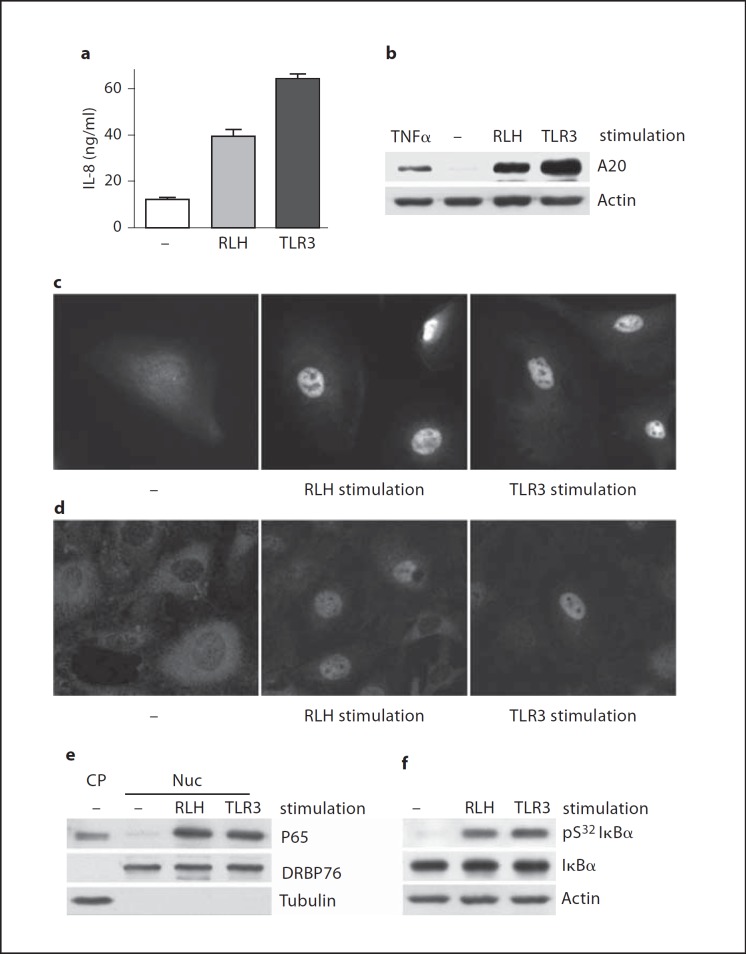Fig. 4.
NF-ĸB is activated by TLR3 or RLH stimulation. a Culture supernatants from human podocytes were collected after 24 h incubation in medium (-), or transfection with (RLH) or addition of (TLR3) Poly(I:C) as detailed for figure 3. Release of human IL-8 was measured by ELISA. b Western blotting of lysates from human podocytes stimulated for 8 h with 20 ng/ml TNFα as a positive control, left unstimulated (-) or stimulated by transfection with (RLH) or addition of (TLR3) Poly(I:C) disclosed production of A20, an NF-ĸB-driven gene product in response to dsRNA. c Human podocytes, grown on coverslips, were left unstimulated (-) or stimulated by transfection with (RLH) or addition of (TLR3) Poly(I:C) for 3 h. Cells were then stained with anti-NF-ĸB P65 Ab. d Similarly, mouse podocytes were grown on coverslips and left untreated (-) or transfected (RLH) or added (TLR3) Poly(I:C) for 3 h, and stained with anti-P65 Ab. e Nuclear translocation of P65 in human podocytes was tested as in figure 3g. Tubulin and DRBP76 marked the cytoplasmic and nuclear fractions, respectively. f Phosphorylation of IĸBα at serine 32 (pS32 IĸBα) was detected by Western blot in human podocytes 3 h after RLH or TLR3 stimulation. Protein loading was evaluated by blotting for total IĸBα and actin.

